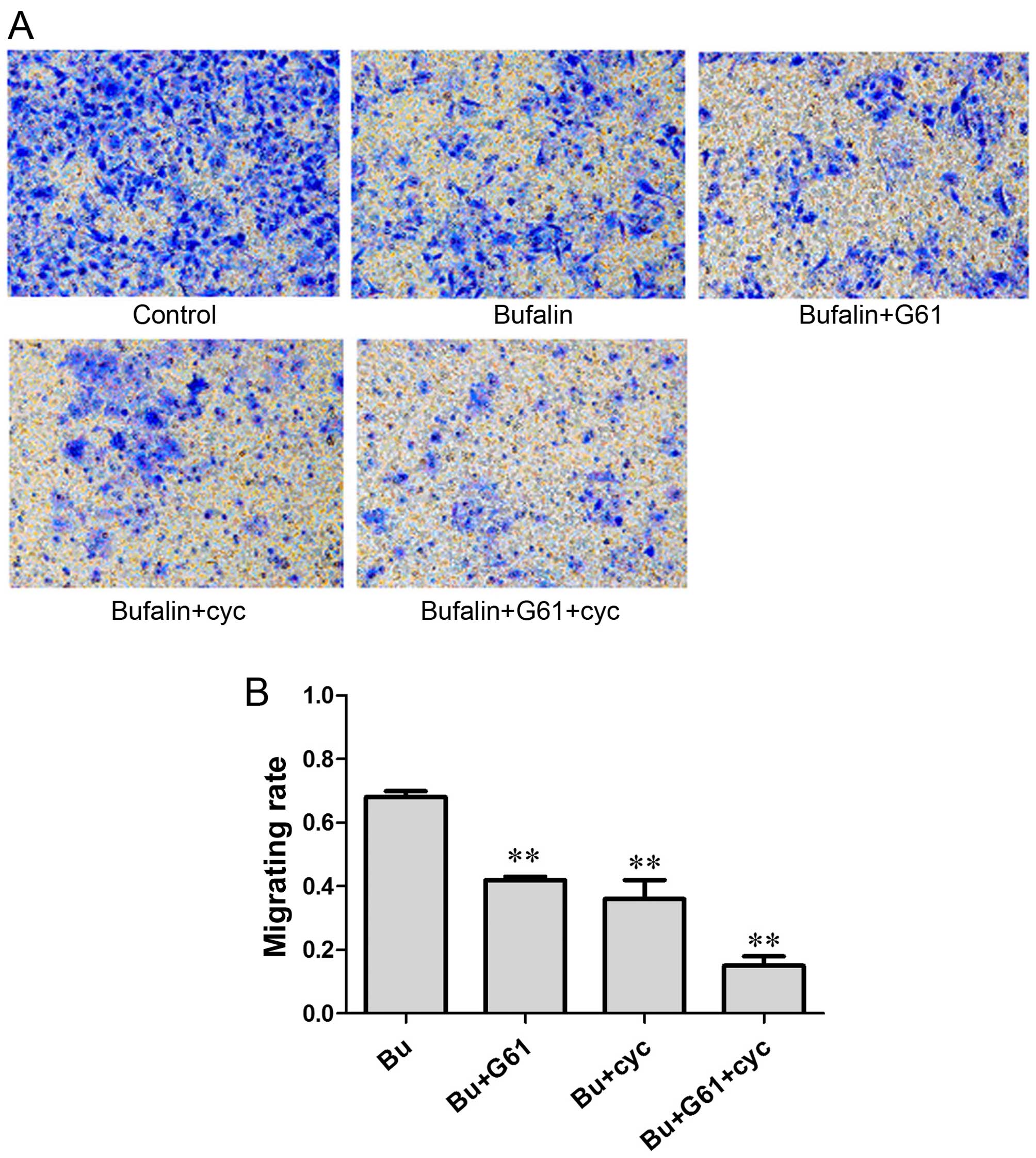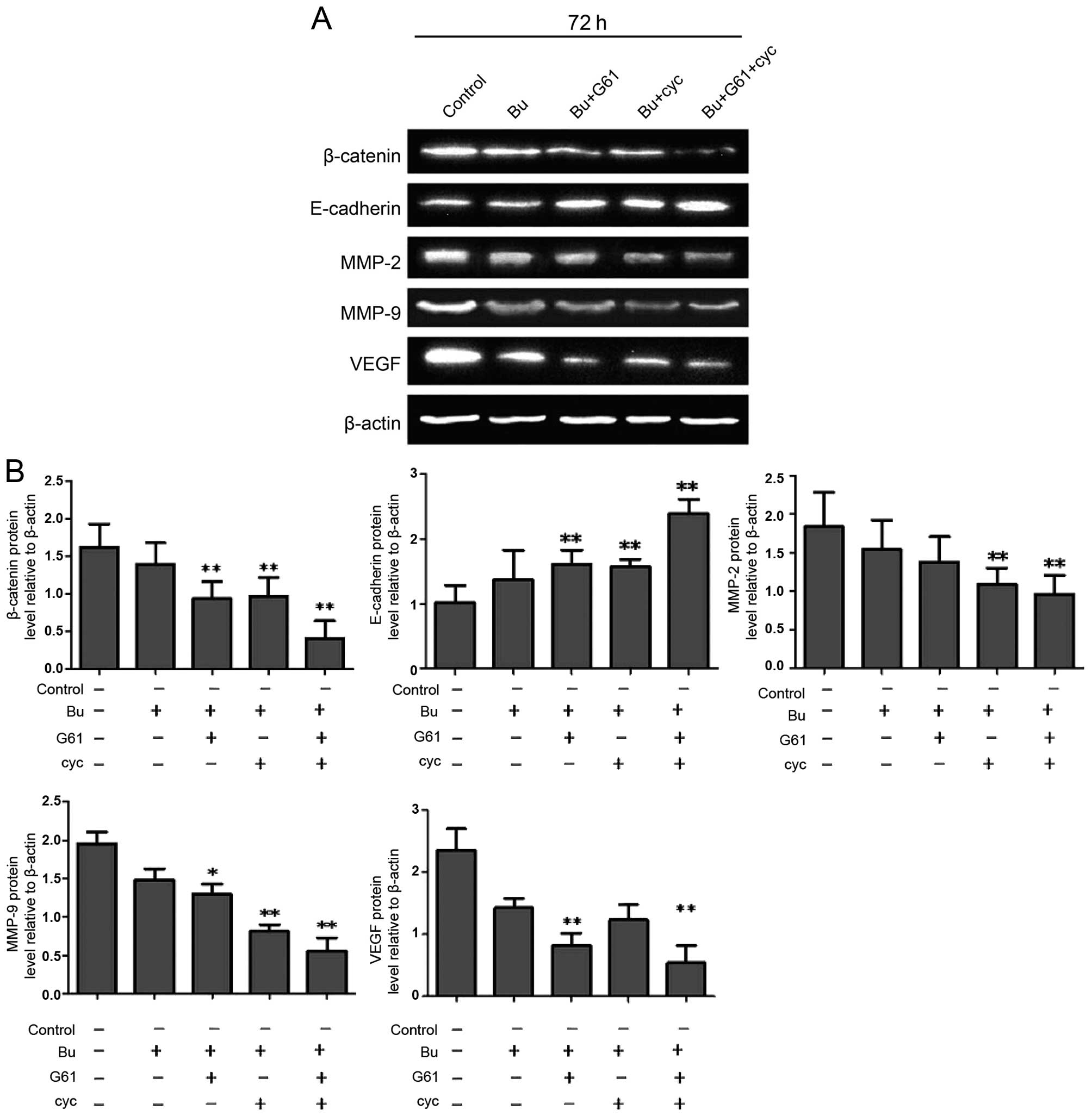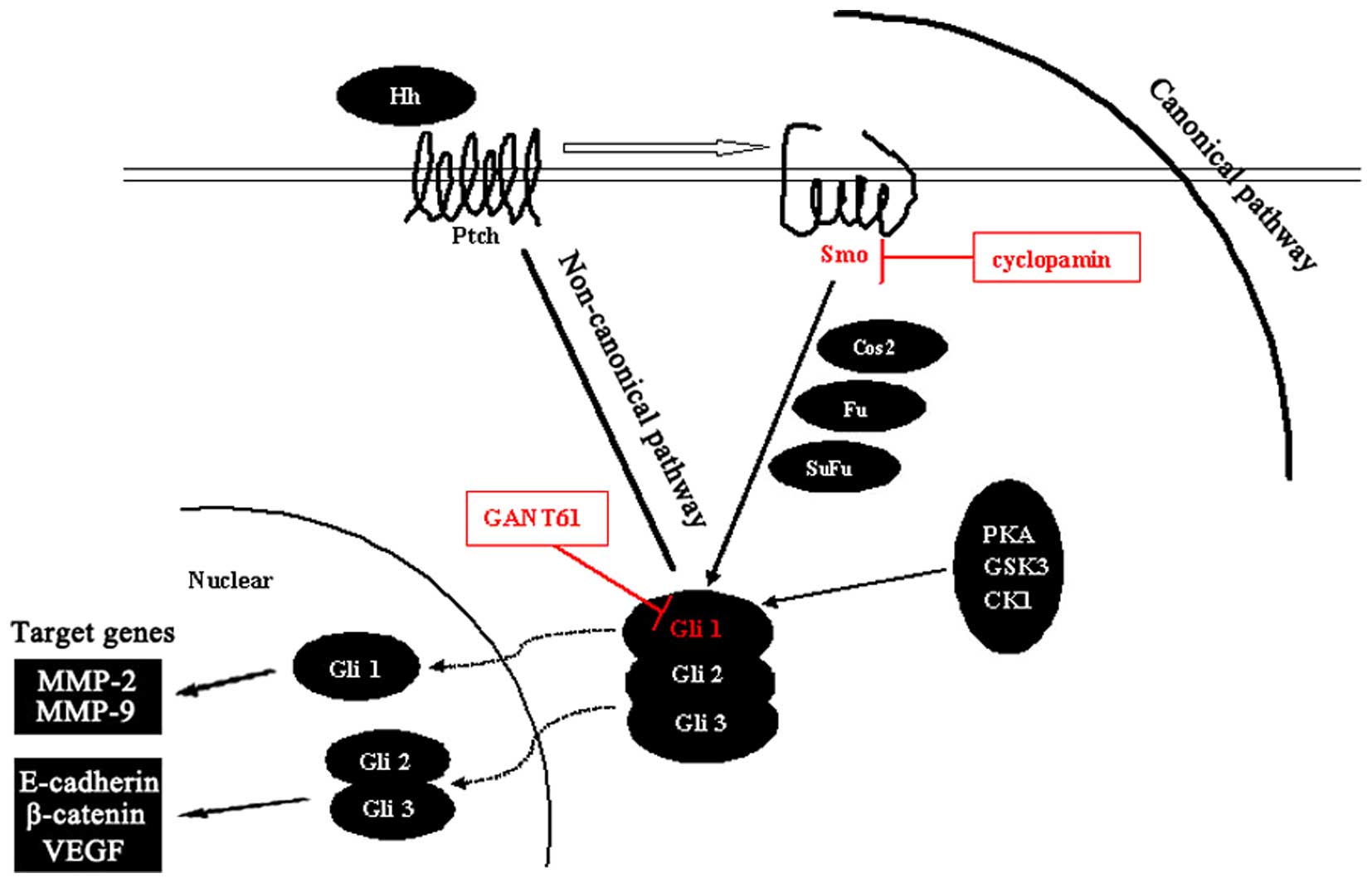|
1
|
Martí-Bonmatí L, Sanz-Requena R, de Gracia
BP and Carot-Sierra JM: Magnetic resonance pharmacokinetic imaging
clusterization of hepatocellular carcinomas as a means to grade
tumor aggressiveness. Expert Rev Gastroenterol Hepatol. 6:711–716.
2012. View Article : Google Scholar : PubMed/NCBI
|
|
2
|
Xiong JJ, Altaf K, Javed MA, Huang W,
Mukherjee R, Mai G, Sutton R, Liu XB and Hu WM: Meta-analysis of
laparoscopic vs open liver resection for hepatocellular carcinoma.
World J Gastroenterol. 18:6657–6668. 2012. View Article : Google Scholar : PubMed/NCBI
|
|
3
|
Yoon AJ, Kuo WH, Lin CW and Yang SF: Role
of ERCC5 polymorphism in risk of hepatocellular carcinoma. Oncol
Lett. 2:911–914. 2011.
|
|
4
|
Cotoi CG, Khorsandi SE, Pleşea IE and
Quaglia A: Histological aspects of post-TACE hepatocellular
carcinoma. Rom J Morphol Embryol. 53(Suppl): 677–682.
2012.PubMed/NCBI
|
|
5
|
Chen JG and Zhang SW: Liver cancer
epidemic in China: Past, present and future. Semin Cancer Biol.
21:59–69. 2011. View Article : Google Scholar
|
|
6
|
Jang KY, Noh SJ, Lehwald N, Tao GZ,
Bellovin DI, Park HS, Moon WS, Felsher DW and Sylvester KG: SIRT1
and c-Myc promote liver tumor cell survival and predict poor
survival of human hepatocellular carcinomas. PLoS One.
7:e451192012. View Article : Google Scholar : PubMed/NCBI
|
|
7
|
Sandhu DS, Tharayil VS, Lai JP and Roberts
LR: Treatment options for hepatocellular carcinoma. Expert Rev
Gastroenterol Hepatol. 2:81–92. 2008. View Article : Google Scholar : PubMed/NCBI
|
|
8
|
Zheng X, Gai X, Han S, Moser CD, Hu C,
Shire AM, Floyd RA and Roberts LR: The human sulfatase 2 inhibitor
2,4-disulfonyl-phenyl-tert-butylnitrone (OKN-007) has an antitumor
effect in hepatocellular carcinoma mediated via suppression of
TGFB1/SMAD2 and Hedgehog/GLI1 signaling. Genes Chromosomes Cancer.
52:225–236. 2013. View Article : Google Scholar
|
|
9
|
Jemal A, Bray F, Center MM, Ferlay J, Ward
E and Forman D: Global cancer statistics. CA Cancer J Clin.
61:69–90. 2011. View Article : Google Scholar : PubMed/NCBI
|
|
10
|
Woo HG, Park ES, Cheon JH, Kim JH, Lee JS,
Park BJ, Kim W, Park SC, Chung YJ, Kim BG, et al: Gene
expression-based recurrence prediction of hepatitis B virus-related
human hepatocellular carcinoma. Clin Cancer Res. 14:2056–2064.
2008. View Article : Google Scholar : PubMed/NCBI
|
|
11
|
Miao Q, Bi LL, Li X, Miao S, Zhang J,
Zhang S, Yang Q, Xie YH, Zhang J and Wang SW: Anticancer effects of
bufalin on human hepatocellular carcinoma HepG2 cells: Roles of
apoptosis and autophagy. Int J Mol Sci. 14:1370–1382. 2013.
View Article : Google Scholar : PubMed/NCBI
|
|
12
|
Li D, Qu X, Hou K, Zhang Y, Dong Q, Teng
Y, Zhang J and Liu Y: PI3K/Akt is involved in bufalin-induced
apoptosis in gastric cancer cells. Anticancer Drugs. 20:59–64.
2009. View Article : Google Scholar : PubMed/NCBI
|
|
13
|
Yin P, Wang Y, Qiu Y, Hou L, Liu X, Qin J,
Duan Y, Liu P, Qiu M and Li Q: Bufalin-loaded mPEG-PLGA-PLL-cRGD
nanoparticles: Preparation, cellular uptake, tissue distribution,
and anticancer activity. Int J Nanomedicine. 7:3961–3969.
2012.PubMed/NCBI
|
|
14
|
Han KQ, Huang G, Gu W, Su YH, Huang XQ and
Ling CQ: Anti-tumor activities and apoptosis-regulated mechanisms
of bufalin on the orthotopic transplantation tumor model of human
hepatocellular carcinoma in nude mice. World J Gastroenterol.
13:3374–3379. 2007. View Article : Google Scholar : PubMed/NCBI
|
|
15
|
Gai JQ, Qin JM and Fan YZ: Experimental
study on bufalin inhibiting hepatocellular carcinoma proliferation
and invasion. World Chin J Digestology. 22:1921–1927. 2014.
|
|
16
|
Nüsslein-Volhard C and Wieschaus E:
Mutations affecting segment number and polarity in Drosophila.
Nature. 287:795–801. 1980. View
Article : Google Scholar : PubMed/NCBI
|
|
17
|
Yoo YA, Kang MH, Kim JS and Oh SC: Sonic
hedgehog signaling promotes motility and invasiveness of gastric
cancer cells through TGF-beta-mediated activation of the ALK5-Smad
3 pathway. Carcinogenesis. 29:480–490. 2008. View Article : Google Scholar : PubMed/NCBI
|
|
18
|
Li X, Wang Z, Ma Q, Xu Q, Liu H, Duan W,
Lei J, Ma J, Wang X, Lv S, et al: Sonic hedgehog paracrine
signaling activates stromal cells to promote perineural invasion in
pancreatic cancer. Clin Cancer Res. 20:4326–4338. 2014. View Article : Google Scholar : PubMed/NCBI
|
|
19
|
Pinter M, Sieghart W, Schmid M, Dauser B,
Prager G, Dienes HP, Trauner M and Peck-Radosavljevic M: Hedgehog
inhibition reduces angiogenesis by downregulation of tumoral VEGF-A
expression in hepatocellular carcinoma. United European
Gastroenterol J. 1:265–275. 2013. View Article : Google Scholar
|
|
20
|
Yang J, Zeng Z, Peng Y, Chen J, Pan L and
Pan D: IL-7 splicing variant IL-7δ5 induces EMT and metastasis of
human breast cancer cell lines MCF-7 and BT-20 through activation
of PI3K/Akt pathway. Histochem Cell Biol. 142:401–410. 2014.
View Article : Google Scholar : PubMed/NCBI
|
|
21
|
Li R, Liu J, Wu H, Liu L, Wang L and Zhang
S: TIKI2 suppresses growth of osteosarcoma by targeting
Wnt/β-catenin pathway. Mol Cell Biochem. 392:109–116. 2014.
View Article : Google Scholar : PubMed/NCBI
|
|
22
|
Yue D, Li H, Che J, Zhang Y, Tseng HH, Jin
JQ, Luh TM, Giroux-Leprieur E, Mo M, Zheng Q, et al: Hedgehog/Gli
promotes epithelial-mesenchymal transition in lung squamous cell
carcinomas. J Exp Clin Cancer Res. 33:342014. View Article : Google Scholar : PubMed/NCBI
|
|
23
|
Pratt J and Annabi B: Induction of
autophagy biomarker BNIP3 requires a JAK2/STAT3 and MT1-MMP
signaling interplay in Concanavalin-A-activated U87 glioblastoma
cells. Cell Signal. 26:917–924. 2014. View Article : Google Scholar : PubMed/NCBI
|
|
24
|
Wu L, Herman JG, Brock MV, Wu K, Mao G,
Yan W, Nie Y, Liang H, Zhan Q, Li W, et al: Silencing DACH1
promotes esophageal cancer growth by inhibiting TGF-β signaling.
PLoS One. 9:e955092014. View Article : Google Scholar
|
|
25
|
Hui CC and Angers S: Gli proteins in
development and disease. Annu Rev Cell Dev Biol. 27:513–537. 2011.
View Article : Google Scholar : PubMed/NCBI
|
|
26
|
Cheng SY and Yue S: Role and regulation of
human tumor suppressor SUFU in Hedgehog signaling. Adv Cancer Res.
101:29–43. 2008. View Article : Google Scholar : PubMed/NCBI
|
|
27
|
Kiesslich T, Mayr C, Wachter J, Bach D,
Fuereder J, Wagner A, Alinger B, Pichler M, Di Fazio P, Ocker M, et
al: Activated hedgehog pathway is a potential target for
pharmacological intervention in biliary tract cancer. Mol Cell
Biochem. 396:257–268. 2014. View Article : Google Scholar : PubMed/NCBI
|
|
28
|
Li X, Ma Q, Xu Q, Liu H, Lei J, Duan W,
Bhat K, Wang F, Wu E and Wang Z: SDF-1/CXCR4 signaling induces
pancreatic cancer cell invasion and epithelial-mesenchymal
transition in vitro through non-canonical activation of Hedgehog
pathway. Cancer Lett. 322:169–176. 2012. View Article : Google Scholar : PubMed/NCBI
|
|
29
|
Huang S, He J, Zhang X, Bian Y, Yang L,
Xie G, Zhang K, Tang W, Stelter AA, Wang Q, et al: Activation of
the hedgehog pathway in human hepatocellular carcinomas.
Carcinogenesis. 27:1334–1340. 2006. View Article : Google Scholar : PubMed/NCBI
|
|
30
|
Tsai SC, Yang JS, Peng SF, Lu CC, Chiang
JH, Chung JG, Lin MW, Lin JK, Amagaya S, Wai-Shan Chung C, et al:
Bufalin increases sensitivity to AKT/mTOR-induced autophagic cell
death in SK-HEP-1 human hepatocellular carcinoma cells. Int J
Oncol. 41:1431–1442. 2012.PubMed/NCBI
|
|
31
|
Han KQ, Gu W, Su YH, Huang XQ, Wang X and
Ling CQ: Overall pharmacodynamic study of Bufalin anti-mouse
orthotopic liver transplantation. Chin J Exp Surg. 21:1436–1438.
2004.
|
|
32
|
Roxanis I: Occurrence and significance of
epithelial-mesenchymal transition in breast cancer. J Clin Pathol.
66:517–521. 2013. View Article : Google Scholar : PubMed/NCBI
|
|
33
|
Debruyne P, Vermeulen S and Mareel M: The
role of the E-cadherin/catenin complex in gastrointestinal cancer.
Acta Gastroenterol Belg. 62:393–402. 1999.
|
|
34
|
Scanlon CS, Van Tubergen EA, Inglehart RC
and D’Silva NJ: Biomarkers of epithelial-mesenchymal transition in
squamous cell carcinoma. J Dent Res. 92:114–121. 2013. View Article : Google Scholar :
|
|
35
|
Cervantes-Arias A, Pang LY and Argyle DJ:
Epithelial-mesenchymal transition as a fundamental mechanism
underlying the cancer phenotype. Vet Comp Oncol. 11:169–184. 2013.
View Article : Google Scholar
|
|
36
|
Shapiro L and Weis WI: Structure and
biochemistry of cadherins and catenins. Cold Spring Harb Perspect
Biol. 1:a0030532009. View Article : Google Scholar :
|
|
37
|
Jerrell RJ and Parekh A: Cellular traction
stresses mediate extracellular matrix degradation by invadopodia.
Acta Biomater. 10:1886–1896. 2014. View Article : Google Scholar : PubMed/NCBI
|
|
38
|
Nielsen HJ, Brünner N, Frederiksen C,
Lomholt AF, King D, Jørgensen LN, Olsen J, Rahr HB, Thygesen K,
Hoyer U, et al; Danish Colorectal Cancer Cooperative Group. Plasma
tissue inhibitor of metalloproteinases-1 (TIMP-1): A novel
biological marker in the detection of primary colorectal cancer.
Protocol outlines of the Danish-Australian endoscopy study group on
colorectal cancer detection. Scand J Gastroenterol. 43:242–248.
2008. View Article : Google Scholar : PubMed/NCBI
|
|
39
|
Zucker S, Doshi K and Cao J: Measurement
of matrix metalloproteinases (MMPs) and tissue inhibitors of
metalloproteinases (TIMP) in blood and urine: Potential clinical
applications. Adv Clin Chem. 38:37–85. 2004. View Article : Google Scholar : PubMed/NCBI
|
|
40
|
Chueh FS, Chen YY, Huang AC, Ho HC, Liao
CL, Yang JS, Kuo CL and Chung JG: Bufalin-inhibited migration and
invasion in human osteosarcoma U-2 OS cells is carried out by
suppression of the matrix metalloproteinase-2, ERK, and JNK
signaling pathways. Environ Toxicol. 29:21–29. 2014. View Article : Google Scholar
|
|
41
|
Chen YY, Lu HF, Hsu SC, Kuo CL, Chang SJ,
Lin JJ, Wu PP, Liu JY, Lee CH, Chung JG, et al: Bufalin inhibits
migration and invasion in human hepatocellular carcinoma SK-Hep1
cells through the inhibitions of NF-κB and matrix
metalloproteinase-2/-9-signaling pathways. Environ Toxicol.
30:74–82. 2015. View Article : Google Scholar
|
|
42
|
Zhai XF, Lv X, Gu W, Song CC and Li B:
Three kinds of anti-tumor Chinese medicine effective components
influencing on human umbilical vein endothelial cells growth. Chin
Remedics Clin. 11:752–754. 2011.
|



















